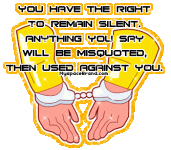Here's a very simple way to find your shaft's Pivot Length.
1. Place any ball on the center spot of your table - this is your "object ball". Using a striped ball as your "cue ball" (with the stripe vertical and the stripe's edge pointed at the OB's edge as shown below), line up a straight shot for a corner pocket.
2. To start, separate the two balls by a measured distance that you guess is your shaft's Pivot Length minus 1 inch (so if you think your shaft might have a Pivot Length of 12", separate the balls by 11" to start).
3. Offset your tip so that it contacts the CB on the edge of the CB's stripe and the cue and the edge of the stripe are both aimed at the edge of the OB.
4. Stroke straight through the edge of the CB's stripe directly at the OB's edge - shoot the shot hard (without sacrificing accuracy) to eliminate swerve.
5. You'll miss the shot at first - that's a normal part of the test. When you miss, change the distance a measured amount and try again, aiming the cue and the edge of the CB's stripe at the OB's edge as before. If you got too much squirt, make the distance smaller. If you got too little squirt, make the distance greater.
6. When the shot goes in and the CB spins in place (more or less), the distance between the balls for that shot + 1 1/8" is your shaft's Pivot Length.
NOTE:
The Simple Squirt Test is like the "aim-and-pivot" squirt test except that it measures the Pivot Length for the actual tip/CB contact point rather than for the "center of shaft" offset. This makes the results more accurate and consistent than the aim-and-pivot results, but it means you have to add a small step when using the Pivot Length for applying aim-and-pivot ("backhhand") english: after pivoting the cue so the shaft's centerline points at the desired offset point, shift the stick slightly parallel so you'll actually hit the desired offset point with the tip.
pj
chgo
[THANKS TO JAL FOR VALUABLE INPUT.]

1. Place any ball on the center spot of your table - this is your "object ball". Using a striped ball as your "cue ball" (with the stripe vertical and the stripe's edge pointed at the OB's edge as shown below), line up a straight shot for a corner pocket.
2. To start, separate the two balls by a measured distance that you guess is your shaft's Pivot Length minus 1 inch (so if you think your shaft might have a Pivot Length of 12", separate the balls by 11" to start).
3. Offset your tip so that it contacts the CB on the edge of the CB's stripe and the cue and the edge of the stripe are both aimed at the edge of the OB.
4. Stroke straight through the edge of the CB's stripe directly at the OB's edge - shoot the shot hard (without sacrificing accuracy) to eliminate swerve.
5. You'll miss the shot at first - that's a normal part of the test. When you miss, change the distance a measured amount and try again, aiming the cue and the edge of the CB's stripe at the OB's edge as before. If you got too much squirt, make the distance smaller. If you got too little squirt, make the distance greater.
6. When the shot goes in and the CB spins in place (more or less), the distance between the balls for that shot + 1 1/8" is your shaft's Pivot Length.
NOTE:
The Simple Squirt Test is like the "aim-and-pivot" squirt test except that it measures the Pivot Length for the actual tip/CB contact point rather than for the "center of shaft" offset. This makes the results more accurate and consistent than the aim-and-pivot results, but it means you have to add a small step when using the Pivot Length for applying aim-and-pivot ("backhhand") english: after pivoting the cue so the shaft's centerline points at the desired offset point, shift the stick slightly parallel so you'll actually hit the desired offset point with the tip.
pj
chgo
[THANKS TO JAL FOR VALUABLE INPUT.]
Last edited:
